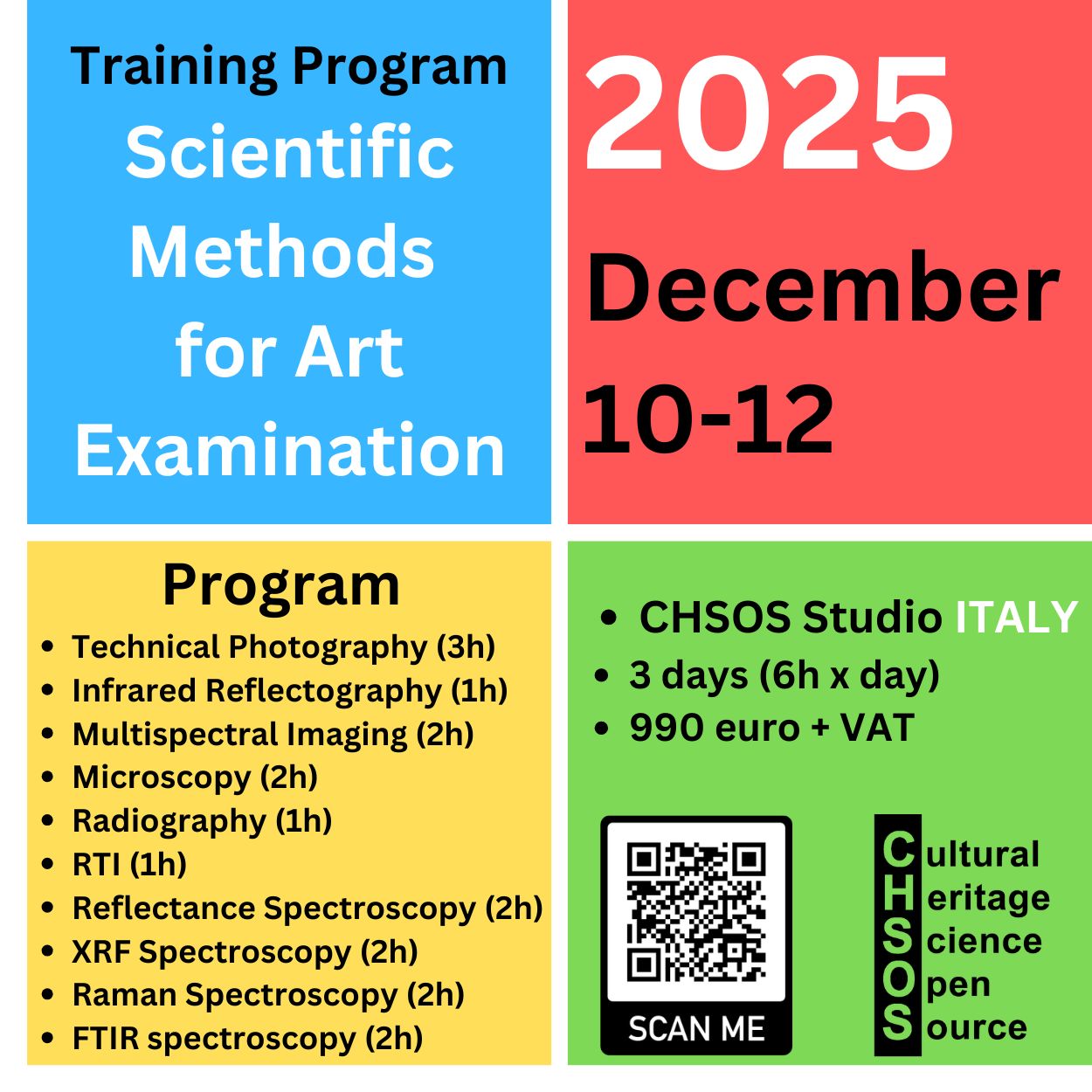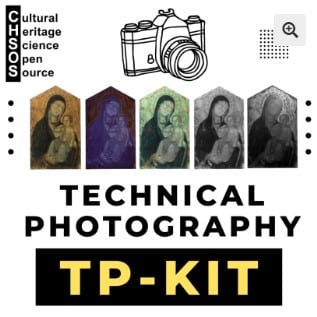Bitumen
This page presents the spectroscopic analysis of bitumen.
The pigment has been examined using XRF spectroscopy, Raman spectroscopy, FTIR spectroscopy, and reflectance spectroscopy. These complementary techniques provide valuable insights into the pigment’s composition and structure.
This page aims to show which analytical methods are most effective for identifying this pigment in artworks and historical materials. By comparing results across different techniques, it serves as a practical reference for heritage science, conservation, and pigment analysis.
Bitumen was very popular in the 18th and 19th centuries.
Manufacturer / product code: Zecchi / 0098
Chemical description: high-molecular hydrocarbons
Color: blue
Color Index: NBk6
More info: C. Bothe “Asphalt” In: B. Berrie, Artists’ Pigments: A Handbook of Their History and Characteristics Volume 4, National Gallery of Art, Washington, 2007. Colourlex
Bitumen, also known as asphaltum, is a dark brown to black material derived from natural petroleum deposits. In art history, it gained popularity as a rich, transparent pigment used in oil painting, particularly during the 18th and 19th centuries. Artists valued bitumen for its deep, warm glazes that enhanced shadows and added dramatic depth to a composition. It was also found in historical mixtures such as Mummy Brown, where it contributed to the pigment’s warm tone.
Chemically, bitumen is a complex hydrocarbon, insoluble in water but soluble in turpentine and other organic solvents. This property made it easy to mix with oil mediums, but it also led to one of its biggest flaws: poor drying. Bitumen can remain soft for decades, causing paint layers to wrinkle, crack, and lose adhesion. Many masterpieces by artists like Delacroix and Turner have suffered from its instability.
Today, bitumen pigment is still available from specialist suppliers, often in modified forms that improve stability. Conservators study its composition to understand degradation in historical artworks. While its use in modern oil painting is limited due to archival concerns, bitumen remains an important part of pigment history and the study of traditional painting techniques.
Raman spectroscopy – bitumen
Pigments (powder, no binder)

Raman Spectroscopy 785 nm Pigments (pure, no binder) (67937 downloads )
Pigments with acrylic binder (Pigments Checker)

Raman Spectroscopy 785 nm Pigments-Checker Database (68117 downloads )
Pure pigments (no binder, just powder)
DOWNLOAD paper: “Pigments Checker version 3.0, a handy set for conservation scientists: A free online Raman spectra database”

XRF spectroscopy – bitumen
XRF Spectroscopy Pigments-Checker Database (77542 downloads )
DOWNLOAD previous database from Pigments Checker V.3 DOWNLOAD paper: R. Larsen, N. Coluzzi, A. Cosentino “Free XRF Spectroscopy database of Pigments Checker” Intl Journal of Conservation Science.

Reflectance Spectroscopy (200-1000 nm) – GorgiasUV Spectrometer – bitumen
Reflectance Spectroscopy (200-1000 nm) (GorgiasUV) Pigments-Checker Database (81062 downloads )

Reflectance spectroscopy – Gorgias spectrometer for Art – bitumen
Reflectance Spectroscopy (350-950 nm) (Gorgias) Pigments-Checker Database (87966 downloads )

NIR Reflectance spectroscopy – bitumen
NIR-Reflectance Spectroscopy (930-1690 nm) Pigments-Checker Database (77034 downloads )

FT-IR Spectroscopy (Non-invasive Diffuse Reflectance Probe) – bitumen

FTIR Diffuse Reflectance Spectroscopy Pigments-Checker Database (68789 downloads )
FTIR non-invasive Spectroscopy Pigments (pure, no binder) Database (70571 downloads )






